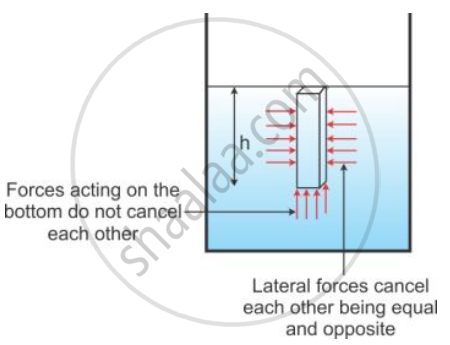Advertisements
Advertisements
Question
What is the cause of upthrust? At which point can it be considered to act?
Solution
A liquid contained in a vessel exerts pressure at all points and in all directions. The pressure at a point in a liquid is the same in all directions - upwards, downwards and sideways. It increases with the depth inside the liquid.

When a body is immersed in a liquid, the thrusts acting on the side walls of the body are neutralized as they are equal in magnitude and opposite in direction. However, the magnitudes of pressure on the upper and lower faces are not equal. The difference in pressure on the upper and lower faces cause a net upward force (= pressure x area) or upthrust on the body.
It acts at the centre of buoyancy.
APPEARS IN
RELATED QUESTIONS
What is upthrust ?
An object of weight 200 N is floating in a liquid. What is the magnitude of buoyant force acting on it ?
Why does a block of wood held under water rise to the surface when released ?
Differentiate between thrust and pressure.
Why is the tip of an allpin made sharp?
State the laws of liquid pressure.
How does the liquid pressure on a diver change if :
The diver moves horizontally?
The pressure inside a liquid of density p at a depth h is :
A hammer exerts a force of 1.5 N on each of the two nails A and B. The area of cross section of tip of nail A is 2 mm2 while that of nail B is 6 mm2. Calculate pressure on each nail in pascal.
Calculate the hydrostatic pressure exerted by water at the bottom of a beaker. Take the depth of water as 40 cm, the density of water 1000 kgm−3 and g = 9.8 ms−2.
